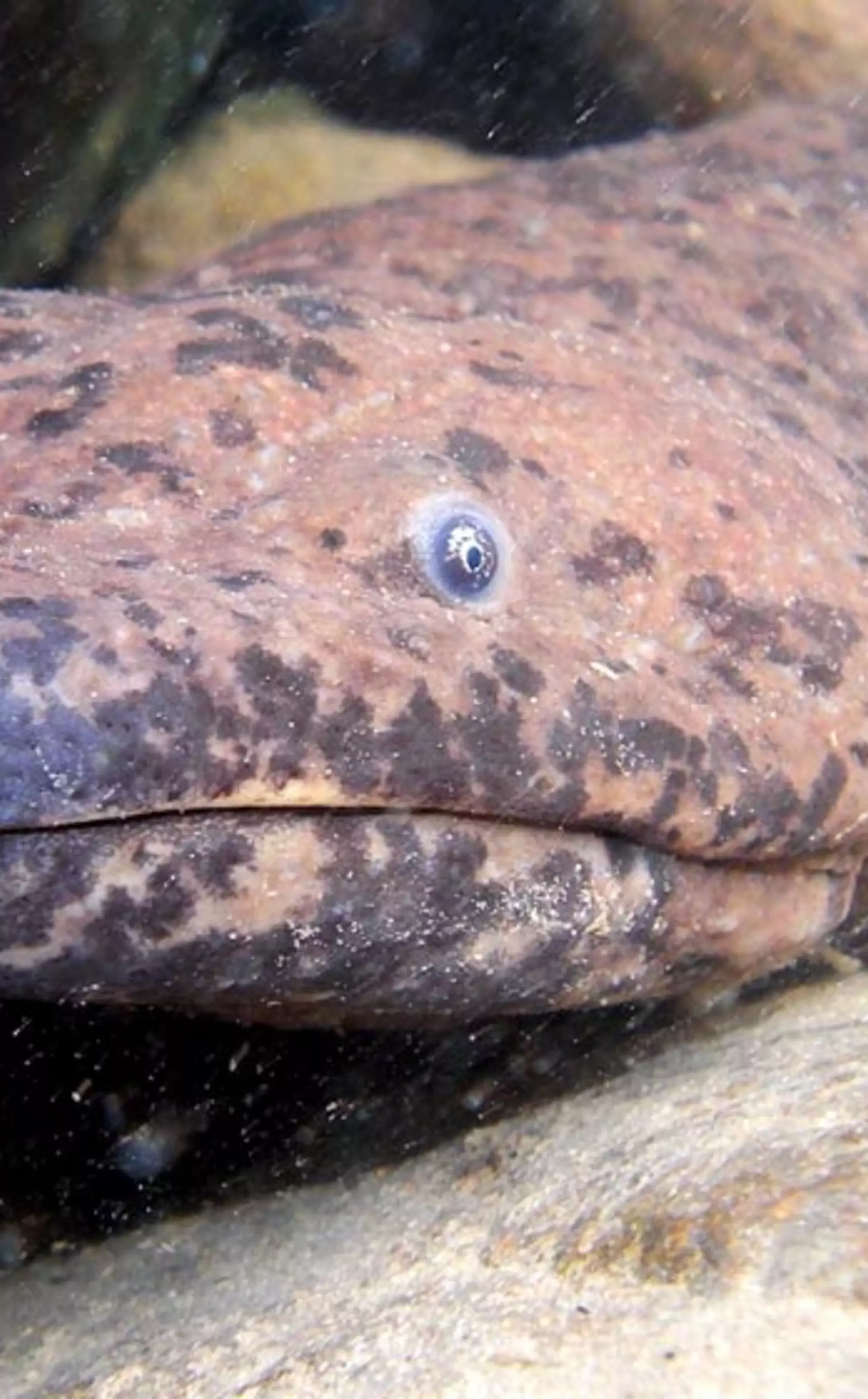
ZSL
Zoological Society of London
Demand from the luxury food market has driven the world’s largest amphibian, the Chinese giant salamander (Andrias davidianus), to the brink of extinction in the wild, according to a pioneering study that warns these iconic animals have now all but disappeared from their traditional freshwater habitats.
Published in the journal Current Biology, the landmark study details how a team of scientists from international conservation charity ZSL (Zoological Society of London), working alongside local partners including the Kunming Institute of Zoology (KIZ), conducted the most extensive wildlife survey seen in China to date. Field surveys were carried out at 97 sites in 16 of the country’s 23 provinces over a four-year period, providing first-hand evidence of the desperate plight faced by Chinese giant salamanders, which face threats including poaching for growing human demand.

Although depicted in Chinese culture for thousands of years – even inspiring the iconic yin-yang motif, according to legend – Chinese giant salamanders have more recently become a highly coveted delicacy. To satisfy this growing demand, the amphibians, which can grow up to 1.8m long, are routinely harvested from the wild to stock commercial breeding farms.
Classified as Critically Endangered by the IUCN Red List of Threatened Species, Chinese giant salamanders belong to an ancient group of salamanders that diverged from their closest relatives over 170 million years ago during the Jurassic Period, and are considered a global conservation priority for maintaining evolutionary history.
Overexploitation of these incredible animals for human consumption has had a catastrophic effect
Report co-author Dr Samuel Turvey from ZSL’s Institute of Zoology said: “The overexploitation of these incredible animals for human consumption has had a catastrophic effect on their numbers in the wild over an amazingly short time-span. Unless coordinated conservation measures are put in place as a matter of urgency, the future of the world’s largest amphibian is in serious jeopardy.”
A related study also published in Current Biology – led by KIZ alongside partners including ZSL and Royal Ontario Museum – reveals that the Chinese giant salamander, previously thought to represent a single species, actually appears to consist of at least five distinct genetic lineages – some of which are now exceedingly rare and possibly already extinct in the wild.
Chinese giant salamanders are a flagship species
Co-author Dr Fang Yan from KIZ said: “Together with addressing wider pressures such as poaching for commercial farms and habitat loss, it’s essential that suitable safeguards are put in place to protect the unique genetic lineage of these amazing animals, which dates back to the time of the dinosaurs.”
While Chinese legislation prohibits the harvesting of wild populations of Chinese giant salamander, the country’s Ministry of Agriculture supports widespread releases of farmed animals as a conservation measure. Paradoxically, this approach may be harmful to wild populations as it risks mixing genetic lineages and spreading wildlife disease. The study’s authors instead call for the establishment of captive populations of genetically distinct lineages for the specific purpose of conservation breeding.
Chinese giant salamanders are a flagship species for China's freshwater river systems. Efforts to conserve these charismatic amphibians will play a vital role in protecting the region’s habitats and biodiversity, as well as freshwater resources for the people of China.
